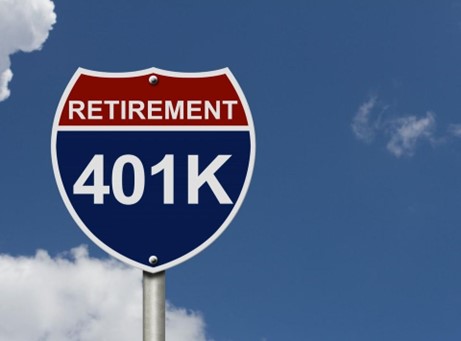
A] Prelude*
* For more general and detailed information about U.S. Retirement Plans, feel free to visit our dedicated webpages: https://expatpensionholland.nl/usa-expat-pensions
A recent report shows that 401(k) participants continued to save at the highest level ever in 2023, thanks largely to auto-enrollment bumping participation rates. 401(k) participants saved at record-high rates in 2023, according to How America Saves, Vanguard’s annual report on the retirement savings behaviors of nearly five million American workers.
The report found that the average participant deferral rate matched the historic high of 7.4% in 2023 (the median deferral rate was 6.2%). When combined with employer contributions, the average participant total savings rate kept pace with the all-time high of 11.7% (median 11%), reached the prior year.
“Smart plan design features are removing barriers to saving. Growth of advice and financial wellness tools are encouraging investing behaviors that lead to retirement readiness for more Americans,” said John James.
Chief among those smart plan design features making a significant impact? Auto-enrollment! In 2023, a record-high 59% of plans record kept by Vanguard offered automatic enrollment, which research has shown improves participation rates. Among auto-enrollment plans, 60% defaulted employees at a deferral rate of 4% or higher, an all-time high.
Ten years ago, only 35% of plans defaulted employees into the plan at a rate of 4% or higher. More participants than in any previous How America Saves report (43%) increased their savings rate in 2023, driven in part by plan design features like automatic annual savings increases.
The report found 77% of plans with more than 1,000 participants featured automatic enrollment. Plans with automatic enrollment had a 94% participation rate, compared with 67% for voluntary enrollment plans. And 67% of automatic enrollment plans have implemented automatic annual deferral rate increases.
This year’s report also dug up some other encouraging plan design trends that led to workers increasing their savings and improving their investing behaviors.
B] Trends
- Advice becomes more accessible: The percentage of plans offering managed account advice is at an all-time high, and more than 75% of the participants now have access to advice.
- Additionally, a record-high number of participants with access to advice enrolled in the service in 2023. This is an excellent improvement as for many people it is still difficult to figure out by themselves what best to do.
- Employers make it easier for workers to invest for the long-term: Only 1% of investors who invest exclusively in a single target-date fund traded in 2023.
- A record-high 64% of all 2023 contributions went into target-date funds, which many employers offer as an automatic or default investment strategy.
C] More Insight
- 401(k) Account balances: In 2023, the average account balance for Vanguard participants was $134,128; the median balance was $35,286.
- Vanguard participants’ average account balances increased by 19% since year-end 2022, driven by an increase in equity and bond markets and ongoing contributions over the year.
- For comparison, the average 401(k) account balance at Fidelity at the end of 2023 was $118,600, and was $115,000 at plans record kept by T. Rowe Price.
- Roth growth: A Roth feature was offered by 82% of Vanguard plans at year-end 2023, up from 74% in 2019. Among larger plans, 95% offered the feature. At year-end 2023, 17% of participants within these plans had elected the option.
- Target date funds: 96% of plans offered target-date funds at year-end 2023. An important factor driving the use of TDFs is their role as an automatic or default investment strategy. The qualified default investment alternative (QDIA) regulations promulgated under the PPA continue to influence adoption of TDFs.
- Among plans choosing a QDIA, 98% of designated QDIAs were target-date funds. 2% were balanced funds. 83% of all participants used TDFs, and 70% of target-date investors had their entire account invested in a single TDF.
- 401(k) loan activity: During 2023, loan use increased slightly from 2022, however, it remained below the typical use rates of the years before COVID-19. 13% of participants had a loan outstanding, and the average loan balance was about $10,700. Hardship withdrawals rose from 2.8% om 2-22 to 3.6% of participants in 2023, meaning more than 96% did not take a hardship withdrawal last year.
D] Future of 401(K) plan
- As 401(k) participants benefit from the impact of strong plan design features like automatic solutions, the How America Saves report noted that plan sponsors continue to expand the breadth of offerings available within retirement plans.
- “The 401(k) plan is evolving, bringing together not just retirement savings, but also broader financial wellness support for employees,” James said. “Together with plan sponsors and consultants, we are building on the strong foundation of plan design features such as auto-enrollment to better enable employees to reach their financial goals through advice and innovative technology.”
E] Finally
Let’s not forget the substantial tax difference between the Traditional and Roth 401(k) and IRA. We prefer the Traditional version based on the much higher tax benefit.
Both in the U.S. and also in many other countries as the Roth version is often treated as a standard investment account. And thus often included in the assets that fall within the realm of annual wealth taxation.
Needless to say that the exact international tax situation depends on the countries and double tax treaties involved!
